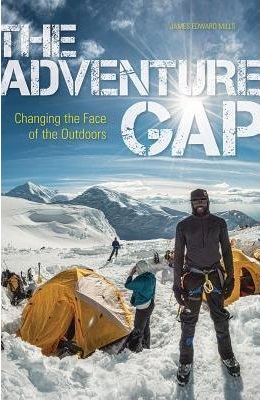Today’s minorities will be the majority in the United States by 2050. And yet, those minorities aren’t out using the vast public spaces that belong to all of us. Think of an outdoor adventurer and what do you see? Probably a white man. The outdoors doesn’t generally exhibit much diversity in people, or at least not in the media.
James Edward Mills shows that black Americans have indeed been involved in important parts of our adventure history. The Buffalo Soldiers, a distinguished Army unit of black men, patrolled Yosemite in the early days, acting as park rangers would today starting in 1903. Matthew Henson spent years in the Arctic exploring, becoming the first man on the North Pole in 1909. Charles Crenchaw was the first black man to climb Denali (then called Mount McKinley) in 1964. Sophia Danenberg was the first African-American to climb Mount Everest in 2006. These are just a few of the people Mills profiles in his history of black outdoor adventurers.
The main story is that of the first all African American summit attempt on Denali, the highest mountain in North America at 20,310′. NOLS put together a team of nine climbers in 2013, but it actually took almost two years leading up to that to select the climbers. Tested on a smaller expedition, Mills didn’t actually get a spot on the Denali team. However, he remained the team journalist and was committed to documenting the ascent.
The expedition had their trials, like all expeditions do, but the climbers were in good shape. Unfortunately, they ultimately did not make it to the summit due to extremely bad weather rolling in. They had to turn back at 19,620′, which is a more than respectable high point. But every single expedition member became a role model for young people. In fact, one team member took a full time job with NOLS afterward, with the express job of presenting the expedition story to various schools and conservation organizations. This book, along with a documentary that was filmed of the trip, have also been enlightening and inspiring others.
If we don’t get more diversity in the outdoors, there won’t be anyone left to protect it. Seeing pretty pictures of parks doesn’t form the same connection as actually going out in them. It’s only by this real life connection that more people will see the value of nature and become invested in its conservation.
This is an issue that’s been in the news a lot this year (it has in the news I read anyway). If you want to read more, check out:
Outdoors for all: why diversity matters to the outdoor industry


1 Pingback